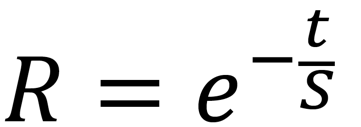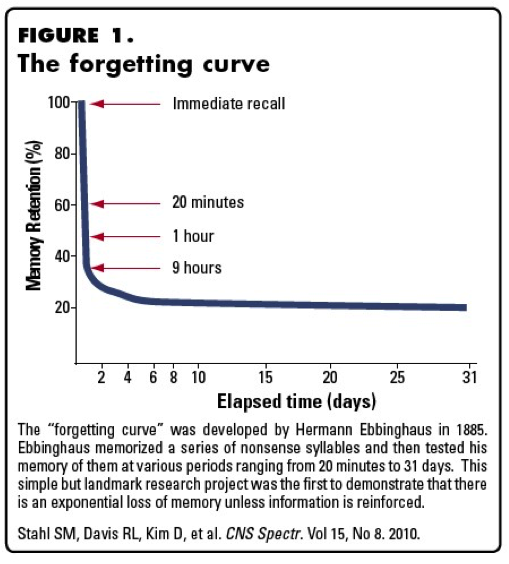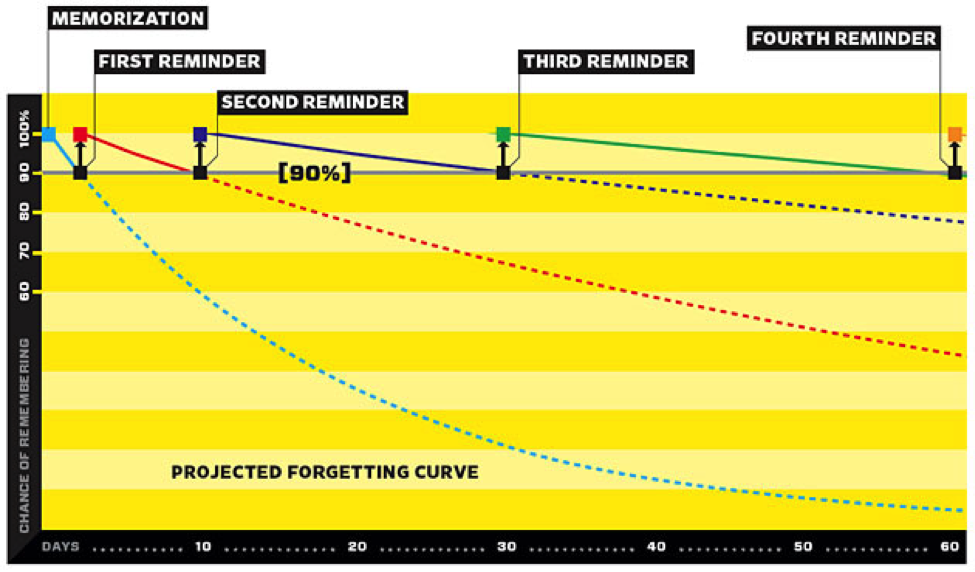(An Argument For Why We a Continued Professional Development Requirement)
The below formula is a rough approximation for the exponential nature of forgetting1. Where R is memory retention, S is strength of memory, and t, of course, being time. Why does this matter? Chances are, if you are reading this blog that you have some interest, if not a commitment, to learning. Moreover, you likely have invested resources (e.g. time, money, etc.,) in gaining knowledge, such as an education on Enterprise Architecture.

Why FEAC and Zachman have
Continuing Education Requirements
by
Cort Coghill
©2016 Cort Coghill, The FEAC Institute, Inc.
Learning in itself is a process and how we do it varies from person to person. Some of us learn by hearing others, some by observation, and still others by experience. In many situations people learn through a combination of the above styles. The reality is that your learning investment is not something you are likely willing to simply throw away. Your learning investment is like any other asset you might own, like your car or home.
You must take care of the investment, which includes maintenance or risk the asset depreciating in value. However, a very real factor to consider is that while we all learn information in different styles, we all also are forgetting a great deal of what we have learned… effectively giving away our knowledge assets. Your investment in getting certified as an Enterprise Architect is more than a designation; it is the creation of knowledge assets. These knowledge assets need to be maintained, least they be lost. Please read on to learn more about the challenge of knowledge retention.

Dr. Hermann Ebbinghaus was an accomplished and forward thinking German psychologist known for experiments in the area of human memory. The Forgetting Curve is one of the research findings of Dr. Ebbinghaus’ research. Essentially it breaks down to this rough approximation that the average person forgets about 80% of what she or he has learned within as little as 30 days. Figure 1 from Stahl et al CNIS Spectr provides a visual depiction of this phenomenon. This theory has been researched and validated countless times in it more then 100-year-old history.
What is the importance of this information you might ask? Well, another factor to Dr. Ebbinghaus’ research was the impact of repetition as a part of increasing knowledge retentions and reducing the knee in the above curve. Figure 2 provides another visual depiction of forgetting curve2. Only this time you should see that repetition helps to increase recall, but this strategy is really most effective when the knowledge reminders are spaced out over time.

Figure 2
Professional development needs to be a part of your continued learning journey. Knowledge reminders such as reviewing course material, attendance at education seminars, etc., are all an active part of helping to reinforce your knowledge and improve the utility and value of your knowledge assets. Very often we are asked why our certification programs have a continuing education requirement. Our answer is simple; chances are you are not retaining as much information as you think you are. Furthermore, the body of knowledge around and associated with Enterprise Architecture is continually growing. Requiring continuing professional development as a part our certification program helps to ensure that practitioners continue to grow their knowledge and ensure that it is maintained like any other valuable asset.
Endnotes
1 https://en.wikipedia.org/wiki/Forgetting_curve, retrieved 29 March 2016 Top
2 http://www.wired.com/2008/04/ff-wozniak/?currentPage=all, retrieved 29 March 2016 Top
